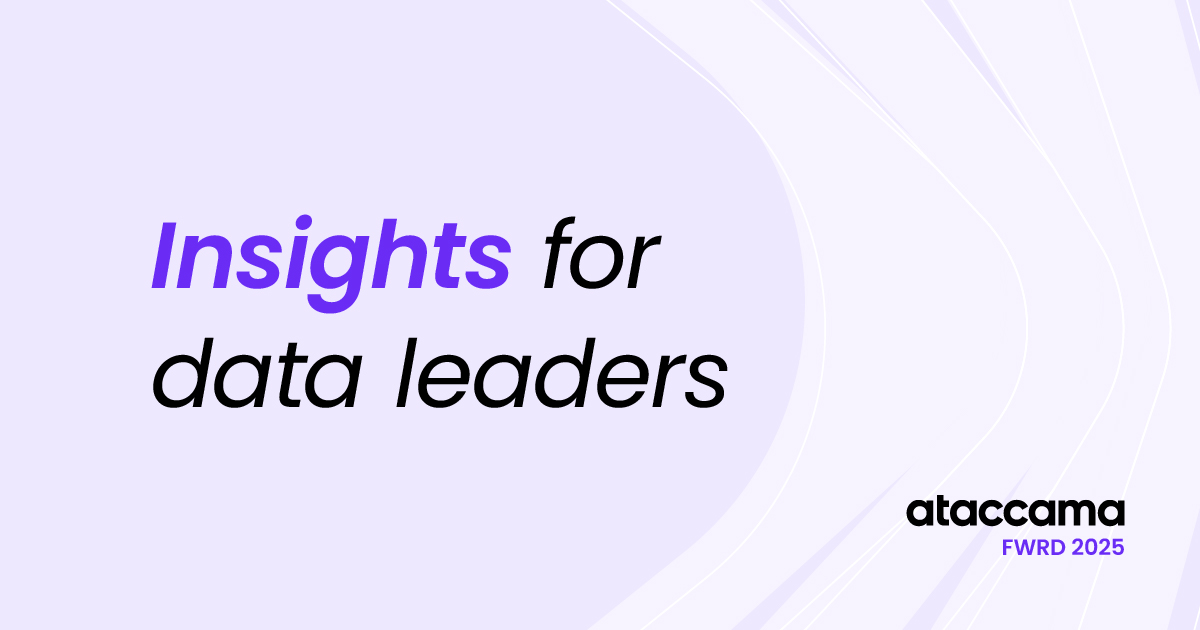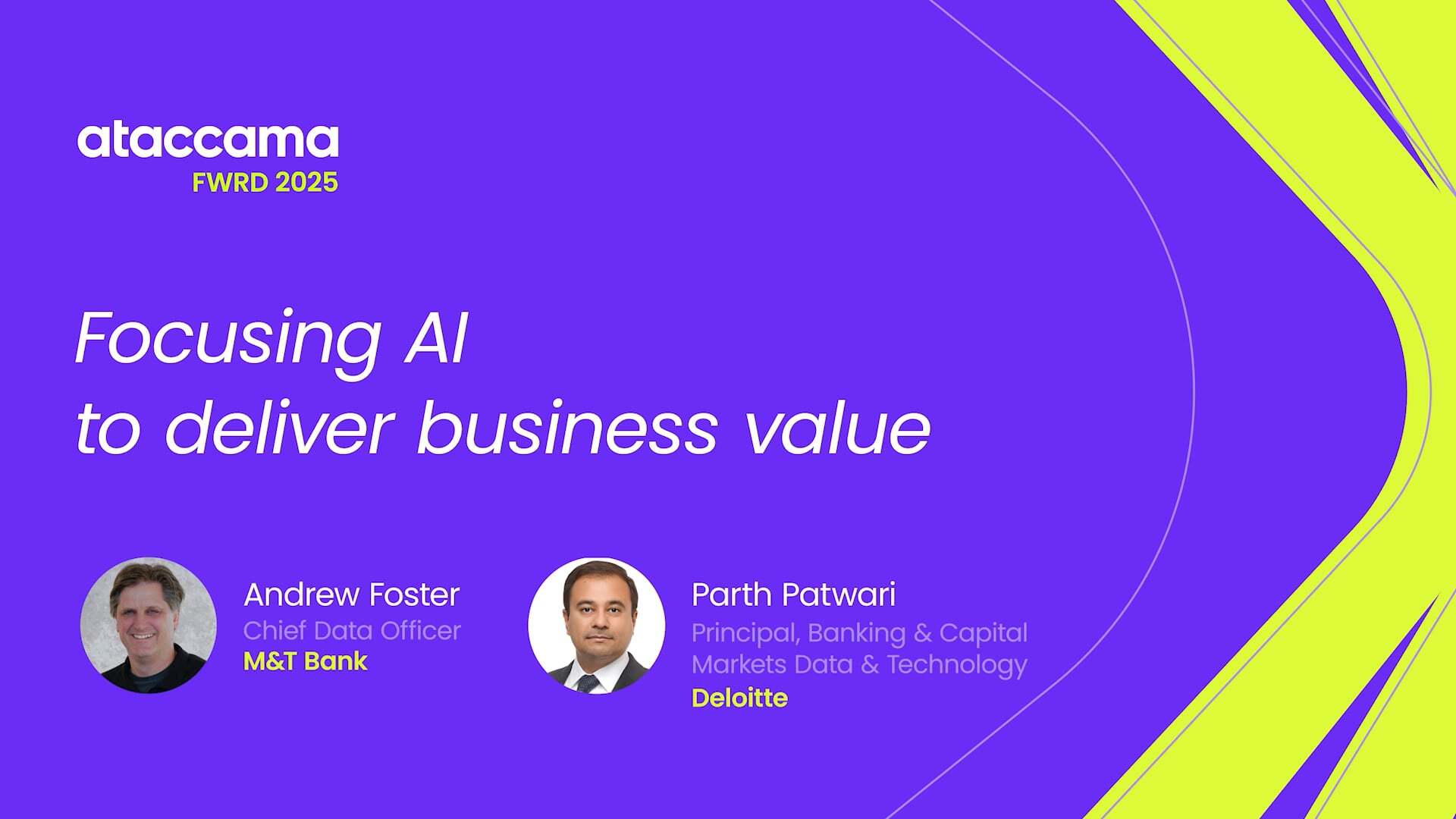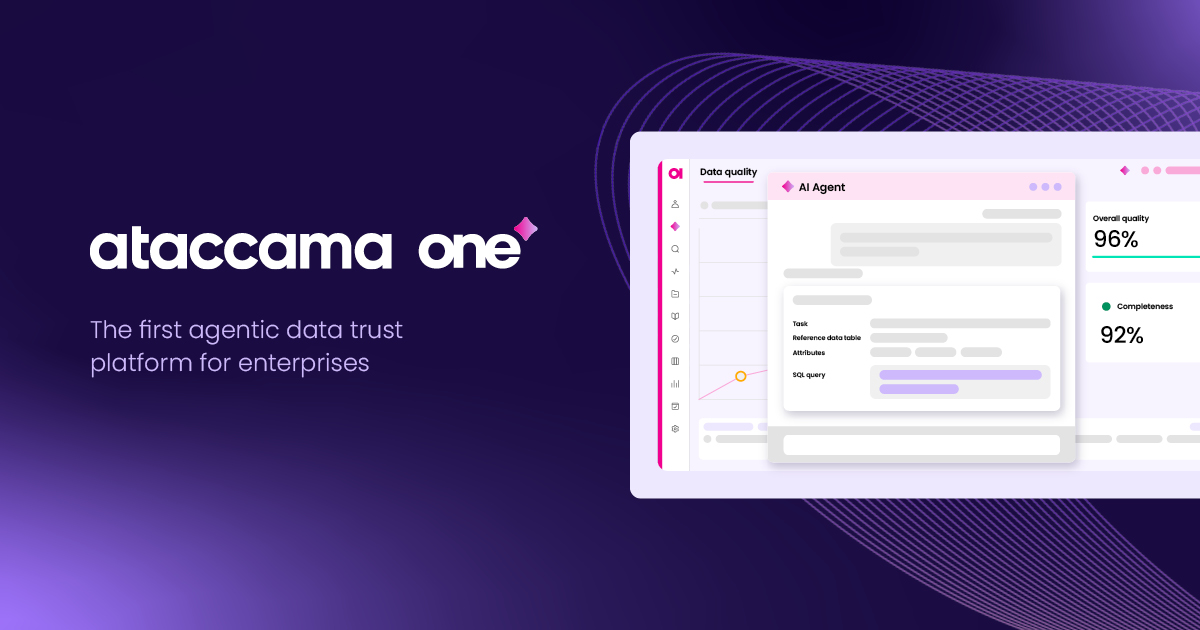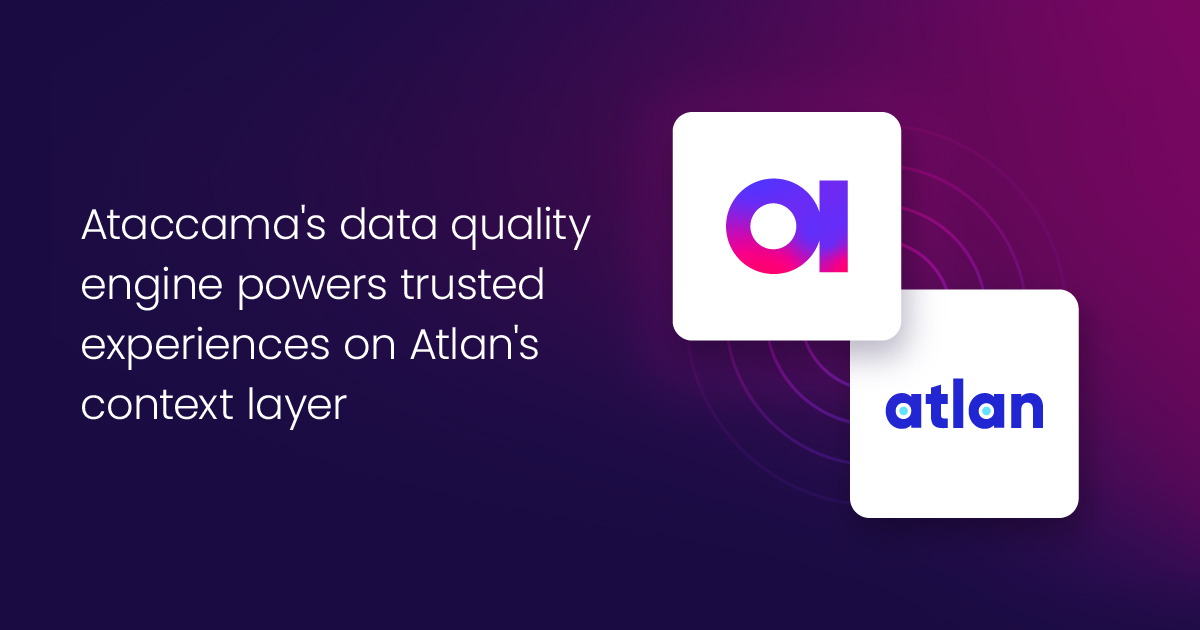Top data lineage tools in 2025

Data lineage tools aren’t just for Fortune 500 corporations anymore — nearly every organization that uses data or maintains a database could benefit from data lineage tools and the possibilities they put on the table.
What is data lineage?
Data lineage is a map of data’s journey. All organizations deal with data — from simple data like customer names and emails, to more complex data sets with decades of sales histories and beyond. When dealing with large quantities of data important to your organization, having visibility of end-to-end data management and how that data moves from its source and through the pipelines of your organization to all the downstream tables, reports, and projections becomes increasingly important. That’s where data lineage tools come into play.
Data lineage solutions offer both a macro and micro look at an organization’s data, allowing users to trace data pipelines through multi-level detail views. This means you can get to the root of data issues quickly and efficiently, helping to correct errors at the origin rather than correct and recorrect downstream. This assists in data governance and compliance reporting, as well as building business efficiency. And many data lineage tools can be tailored to your use-case, with views technical enough for data engineers and broad enough for more general business use.
What are data lineage tools?
Data lineage tools are software that help users visualize how data flows from its source and into every area of an organization. These data quality tools provide interactive diagrams or maps of how the data moves through an organization and how — and why — it changes over time.
In our high-volume data reality, this process is no longer viable as a manual process. Automated data lineage tools are essential for helping businesses understand their data, trust their data, and use their data to move their business forward.
Use cases of data lineage
From audit trails to operations streamlining, there are many data lineage tool use cases:
Data discovery for trusted business reporting. Data lineage allows users to explore data sources and flows, so business teams can understand their data, find out how it was calculated, and know that it comes from a trusted source.
Regulatory & audit trails. Data lineage provides support as organizations seek to stay on track with regulatory and audit requirements by providing visibility into the origins and flow of data. It enables teams to demonstrate exactly how data — especially sensitive data — is processed and handled, how metrics in reports are calculated, and which sources the data comes from. Visibility dashboards and automated error-reports can increase compliance before audit season rolls around.
Root cause analysis. With data lineage, when something breaks, you can quickly see where the issue started and fix it at the source, rather than patch up the errors downstream again and again.
Data modernization. Data lineage allows business to plan and execute modernization with insights into legacy data flows, transformations, and dependencies.
Impact analysis. Data lineage tools help users identify and understand how changes to data pipelines affect other systems or downstream components. It minimizes disruptions and assist organizations in their change management goals. Trusted data helps make data-driven decisions more accurate and more effective.
Data lineage visualization tools
There are two main types of data lineage visualization tools. Each has its pros and cons, and it depends on your specific data lineage use case and organization size as to which is the best option for you.
Open-source data lineage tools are infinitely customizable, but take a significant effort to set up and deploy. They can be a more budget-friendly option to help an organization get started with data lineage.
Commercial data lineage tools like Ataccama, Collibra, Alation, Informatica, and IBM’s watsonx.data intelligence provide a more comprehensive out-of-the-box experience for enterprise-level governance. They offer more features and better software integration options, and offer tech support for implementation of their product. Compare these commercial data lineage tools below.
Best data lineage tools to watch
There is no shortage of data lineage tools on the market, and each is uniquely suited for specific types of organizations or use cases. Here’s a detailed analysis of different data lineage tools and what specialties they cater to:
Ataccama ONE
Ataccama combines first-class lineage with the market-leading data quality solution in one place — a unified data trust platform.
Pick this option if improving data quality, audit readiness, regulatory reporting, trusted BI reporting, and faster DQ troubleshooting is your key focus.
Key capabilities:
- Built-in data quality insights with anomaly overlays right on the lineage map. Ataccama is the only data lineage solution on the market featuring these advanced native capabilities to verify data quality and detect data quality issues and anomalies across entire data flows.It enables customers to trace data back to the source system and proactively identify broken pipelines and remediate data quality issues at the source.
- Business terms in context. Bring glossary onto the lineage to track PII and simplify audits. Custom terms link to catalog items, attributes, and rules, putting your data in your context.
- One unified platform. Data lineage, data quality, catalog, and data observability all in one convenient place. This means that Ataccama ONE contains everything for root-cause analysis and everything for audit-readiness.
- Visualizations for both business and technical users. Users can choose the view they need, whether it’s column-level technical lineage with detailed transformation context for the engineers, or simplified, high-level views with upstream and downstream click-throughs for when leaders need to demonstrate data flows and metrics calculations.
- AI explanations for transformations. AI helps business users understand complex SQL and pipeline logic in plain language. Business users can trace a data point’s origin and understand how it was transformed without relying on IT. It streamlines audits and gives business teams the confidence to act on the data in front of them.
- Support of dozens of automated lineage technologies which allows to extract metadata and derive detailed data lineage from many data sources including PowerBi, Tableau, Databricks Unity Catalog, dbt, AWS Glue, SSIS, Oracle, BigQuery,and many others, including mainframe and legacy technologies.
Likes
According to Gartner user reviews, people love Ataccama for its unified, AI-driven platform that brings every key aspect of data management together—data quality, lineage, governance, glossary, and more—into one seamless experience. Users praise how the platform automatically detects data issues, applies fixes, and learns from their behavior, turning complex data work into something intuitive and almost effortless. They describe Ataccama as a trusted partner that doesn’t just sell software but actively collaborates to share best practices, ideas, and solutions across industries. Service and support also stand out as “outstanding,” with quick, knowledgeable responses that make customers feel genuinely valued.
Dislikes
Gartner reviewers most often mention minor areas for improvement rather than major concerns. Some say the platform can feel overwhelming at first and would benefit from additional onboarding resources or cheat sheets. Others mention wanting a smoother process for moving work between development and production environments. A few note that total cost of ownership requires careful planning, but most agree that the long-term value more than justifies it.
Collibra
Collibra offers a governance-first lineage inside an enterprise governance platform.
Pick this if you need a governance-first platform with a strong business glossary and stewardship workflows to help standardize definitions and responsibilities.
Key capabilities:
- Technical and business lineage with table- and column-level depth.
- OpenLineage support to ingest standardized runtime lineage events from modern data stacks.
- Offers data-quality (DQ) insights on asset pages and across the catalog, but not directly as overlays inside the lineage diagram.
- Features automated data lineage extraction with AI integration.
- Offers many integrations with third-party softwares such as SAP, Oracle, AWS, and more.
Likes
According to Gartner user reviews, Collibra is praised for its broad feature set, strong data governance and lineage capabilities, and secure, customizable platform. Users value its integration with tools like Tableau and Mulesoft, rich interface, and cross-organizational data visibility that improve productivity and compliance.
Dislikes
Gartner reviewers often cite poor documentation, weak search functionality, and inconsistent support as key issues. Users also note complex setup and workflows, slow responsiveness to improvements, high cost, and a less intuitive experience for non-technical or first-time users.
Alation
Alation offers a collaborative approach to end-to-end data lineage, with a focus on data governance and simple interfaces.
Pick this if you need a platform that offers layered data mapping with a robust active-metadata catalog.
Key capabilities:
- Robust modern active-metadata catalog with business lineage.
- Business lineage views that make flows accessible to non-technical users, including meta data layers and information overlays, showing information about data health.
- Similarly to other catalog-led tools, native data quality capabilities are limited.
Likes
According to Gartner user reviews, Alation is praised for its ease of use, strong training and support ecosystem (including Alation University and community resources), and robust data catalog and discovery capabilities. Users highlight its customization options, modern interface, and effective collaboration features that make it a practical “front door” for enterprise data. Many appreciate Alation’s responsive customer success teams, integration flexibility, and balanced mix of functionality and simplicity compared to competitors.
Dislikes
Gartner reviewers commonly mention limited integrations, inconsistent support follow-up, and uneven feature parity between cloud and on-prem versions. Users report slow communication on issues, lineage and workflow customization gaps, and basic or restrictive data models that limit scalability. Other frequent complaints include high cost, minor bugs, missing automation in deletion or versioning, and the need for Python skills or advanced expertise to unlock full functionality.
Informatica
Informatica offers a catalog solution to cloud data governance.
Pick this if you are looking to improve data literacy with extensive risk-mitigation lineage.
Key capabilities:
- Automated end-to-end lineage with code parsing (SQL, stored procedures, AI/ML) and column-level analysis.
- Advanced scanners that extract deep metadata and lineage from multi-cloud data sources.
- Increased regulatory compliance through extensive lineage reporting.
- Cloud-native data sharing solution.
Likes
According to Gartner user reviews, Informatica is valued for its ease of use, flexibility, and comprehensive data governance suite that unifies cataloging, quality, and integration in one platform. Users highlight its intuitive interface, powerful rules engine, and AI-driven features like CLAIRE for automation and intelligent recommendations. Reviewers also appreciate its scalability, broad connector ecosystem, and strong support and service teams, which make it suitable for complex enterprise data environments.
Dislikes
Gartner reviewers often mention complex setup and environment management, slow product innovation, and uneven post-implementation support. Common complaints include integration challenges, limited automation between EDC and Axon, and delays in feature rollouts. Users also point out issues like pricing, access control limitations, and difficult migrations between on-prem and cloud versions, noting that while Informatica’s breadth is impressive, usability and responsiveness sometimes lag behind expectations.
IBM watsonx.data Intelligence
IBM’s watsonx.data intelligence (formerly IBM Manta Data Lineage) offers wide coverage and contextual visibility.
Pick this if you are connecting data lineage across a truly wide array of warehouses, ETL, and business intelligence systems.
- IBM’s acquisition of Manta enabled them to strengthen governance & compliance capabilities.
- Offers a wide technology coverage & cross-platform mapping to connect lineage across sources and offers a step-by-step flow analysis at column level.
- Able to contextualize lineage with semantics and with external metadata such as profiling information, quality scores, PII labels, and more.
Likes
According to Gartner user reviews, IBM Data Lineage is appreciated for its comprehensive end-to-end lineage visualization, strong integration and automation capabilities, and detailed insight into data flows and transformations. Users value the diagram-based views, depth of information in scans, and support for multiple data warehousing technologies. Many also highlight its reliability, good customer support, and customization flexibility, especially for connecting with governance and catalog tools like Collibra.
Dislikes
Gartner reviewers frequently cite poor or outdated interface design, performance issues with large lineage graphs, and non-seamless integrations as key drawbacks. Users report difficulty exporting or filtering lineage data, limited usability for business users, and a steep learning curve due to complex navigation. Other common complaints include slow system performance, gaps in product integration (particularly with Collibra and Ataccama), and inconsistent user experience, which collectively reduce accessibility and efficiency.
The best data lineage tool is the one that works for your organization and your industry — whether that’s healthcare, finance, construction, or beyond.
Building data trust with lineage tools
If you can’t trust your data, you can’t trust the decisions it helps you make. That’s why building data trust is so important. Unreliable data can lead to compliance issues, inaccurate projections, and many unintended consequences. Automated data lineage with data quality overlays enables organizations to identify poor-quality data, understand its impact, and prioritize remediation efforts.
Building data trust requires a plan. Ataccama ONE helps organizations build and maintain data trust in three steps:
Step One: Organize Data. Ataccama ONE can bring order to your data chaos through cataloging, defining, and creating consistency across your data stacks. This is a necessary first step to build a strong data governance and compliance system. Once your data is centralized, you can start using it to its full potential.
Step Two: Understand Data. You can start asking where your data comes from, how high quality it is, and how it’s changed over time once your data is organized. Continuous data monitoring keeps an eye on your data, catching problems early and using AI-powered insights to help correct errors at the source.
Step 3: Improve Data. Clean, standardize, and enrich your data to find and fix erros, create a common language for users, and create reliable decision-ready business assets. Improved data means improved decision-making. Taking your data to the next level helps take your business to the next level.
Conclusion
If lineage doesn’t carry data trust and business meaning, you’re still guessing. Ataccama’s differentiator is simple: one platform that unifies market-leading data quality with first-class lineage — so every arrow on the graph is backed by evidence, not assumptions. This is offered within one unified platform that also includes catalog, observability, and reference data — everything you need, all in one place.Want to see it? We’ll show anomaly and data quality overlays, business terms, and AI explanations in transformations across the data landscape, all within one tool. See Ataccama’s data quality platform in action at ataccama.com/platform/data-quality.
David Lazar
David is the Head of Digital Marketing at Ataccama, bringing eight years of experience in the data industry, including his time at Instarea, a data monetization company within the Adastra Group. He holds an MSc. from the University of Glasgow and is passionate about technology and helping businesses unlock the full potential of their data.







